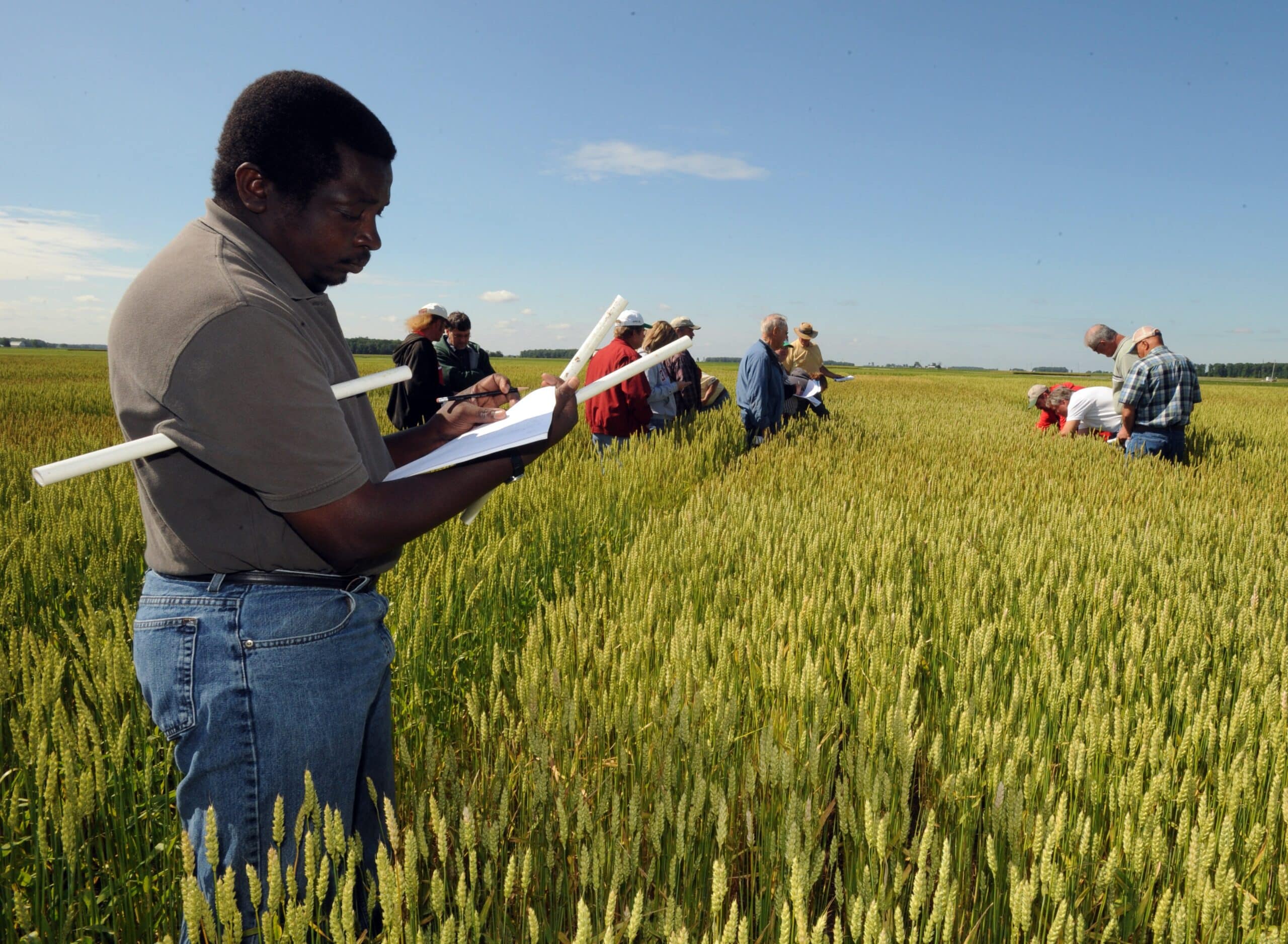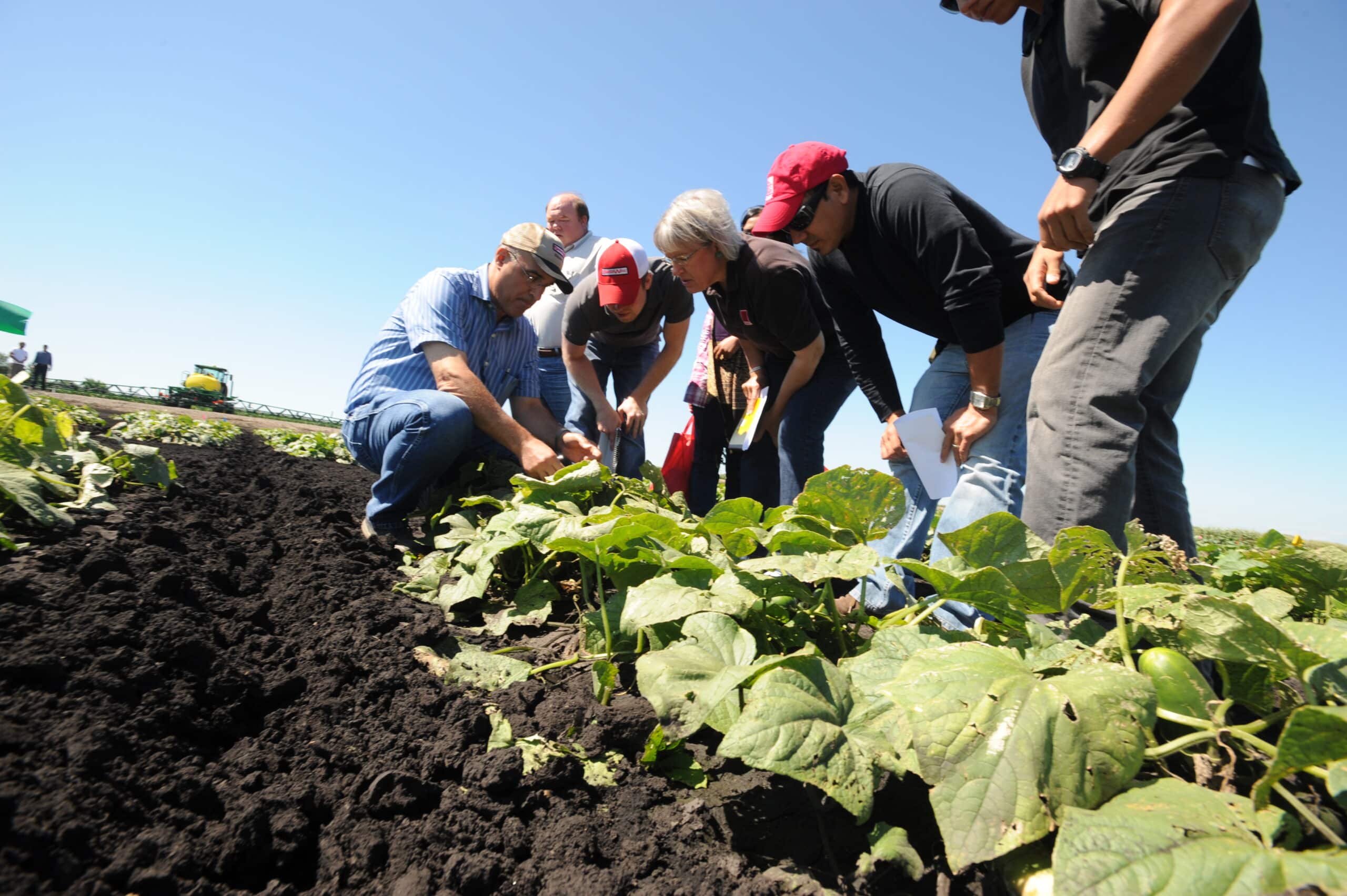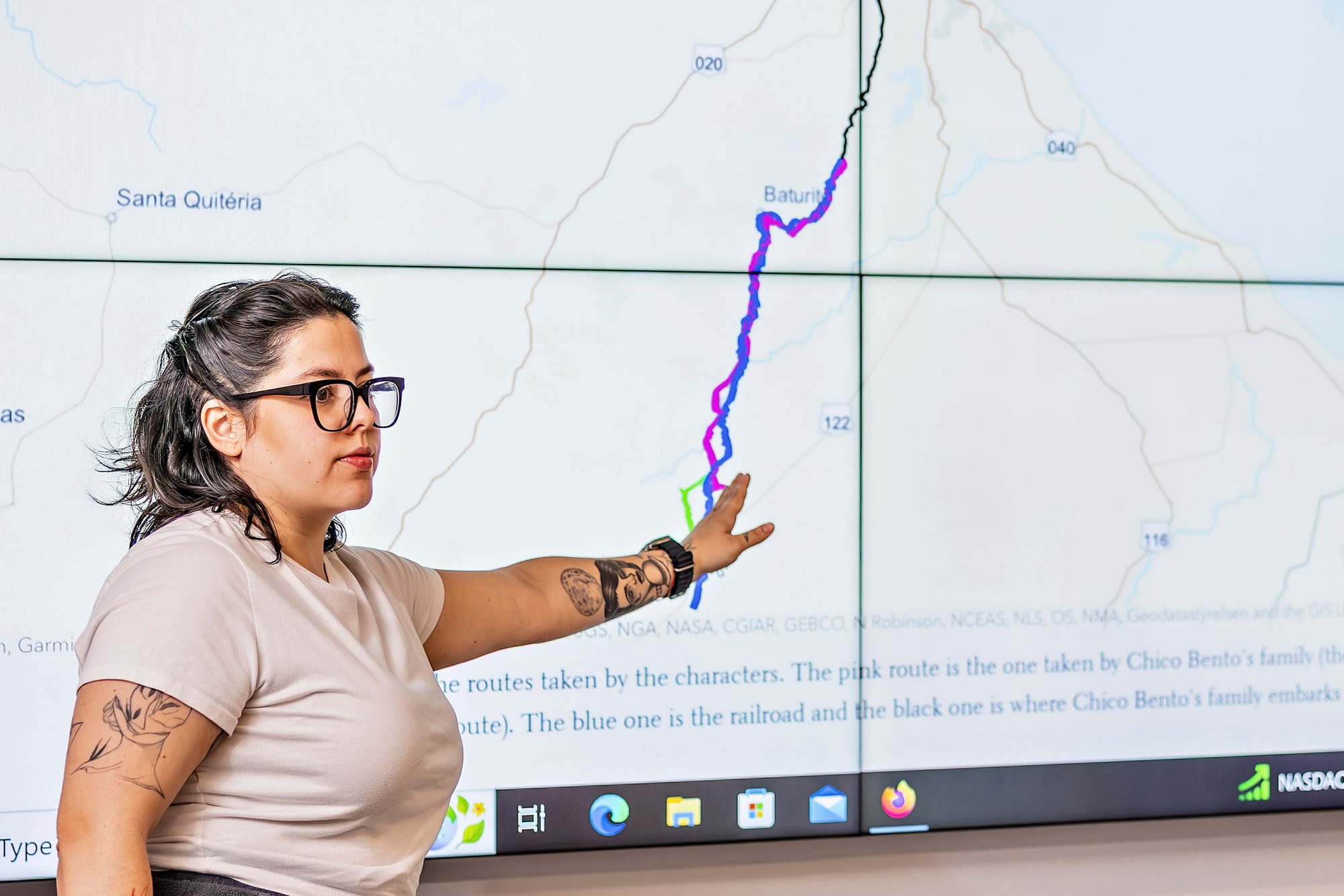Master in Plant Health Management

March 2, 2026
May 11, 2026
Overview
Ohio State’s online Master in Plant Health Management (MPHM) degree is a flexible, fully online plant science degree program designed for both recent graduates and working professionals seeking to advance their careers in agriculture, sustainability, and plant health. Delivered asynchronously, the core curriculum combines training in plant pathology, entomology, weed science, botany, soil science and soil fertility with electives in agribusiness, leadership, and more—offering a truly interdisciplinary education. Students gain practical knowledge and skills to address real-world challenges in crop protection, urban agriculture, and sustainable food systems. With multiple start terms and no GRE requirement, the MPHM prepares graduates for diverse careers in fields like crop advising, pest management, research, and regulatory inspection, making it an ideal fit for those looking to lead in the growing plant health industry.
Academic Calendar
Ohio State’s MPHM program accepts online students three times a year: spring, summer, and autumn.
*Please note that the following dates are U.S. application deadlines. Visit our graduate admissions page for international deadlines.
Academic Calendar
Ohio State’s MPHM program accepts online students three times a year: spring, summer, and autumn.
*Please note that the following dates are U.S. application deadlines. Visit our graduate admissions page for international deadlines.
Admission Criteria
Applicants must have earned a four-year bachelor’s degree from an accredited college or university. All majors are eligible, but applicants should have completed a college-level biology, plant biology, microbiology, or chemistry course. A minimum 3.0 cumulative GPA (on a 4.0 scale or equivalent) for the last bachelor’s or advanced degree earned is required. If below a 3.0 GPA, contact the MPHM program for recommendations. There is a non-refundable application fee. ($60-domestic applicants/ $70-international applicants).
Transcripts
To complete your application and verify your degree and undergraduate GPA, you must submit transcripts from all educational institutions you have attended.
When applying:
- You may upload scanned copies of official transcripts, diplomas, or degree certificates to the online application system. Note: You do not need to submit transcripts for coursework or degrees earned from The Ohio State University.
- These scans help form a complete application packet, but they do not replace the need for official documents.
What is not accepted:
- Advising reports
- Unofficial transcripts or scans labeled “UNOFFICIAL”
- Documents with a URL across the top
- Transcripts missing the institution’s name, seal, stamp, or GPA
These types of documents will not be used for degree verification or GPA calculation.
Exception: You do not need to submit transcripts for coursework or degrees earned from The Ohio State University.
English language testing requirements
- 79 Internet-based TOEFL (IBT) or TOEFL iBT Home edition
- 7.0 IELTS
- 120 or higher Duolingo
Statement of Intent
1-2-page statement of intent describing your professional goals, as well as relevant work, and academic experience. It may be helpful to include autobiographical or other information as it relates to your motivations and interests in pursuing a MPHM degree at Ohio State.
The statement of intent and curriculum vitae/resume can be uploaded with your on-line application as Word or pdf file.
Three Letters of Recommendation
Three letters of recommendation from professional references familiar with your qualifications and potential for graduate study. The MPHM program accepts online submission of letters OR paper letters/reference forms by mail:
a. Electronic submission
Applicants can submit the names and e-mail addresses of 3 references in the online application process. The references will receive e-mail instructions for completing the online recommendation process. Letters of recommendation on letterhead can be uploaded as pdf or Word forms in this process.
Applicants can also log into their application status to verify submission of recommendation letters, and to send remainders to references for letters.
b. Paper copies
If your recommender(s) would rather submit letters by mail, paper copies written on recommenders’ original letterhead stationery may be mailed to the MPHM Graduate Program. If letters are submitted online, paper copies do not need to be sent by mail.
Paper copies must be accompanied by a completed Ohio State Reference Form: admissions.osu.edu/apps/pdfs/refer.pdf
Applicants should fill out page 1 of the reference form, and request that the recommender complete page 2 (this is for paper submission only and is not necessary if the online submission process was used). The recommender should mail the reference form with the letter to:
MPHM Graduate Program
The Ohio State University
201 Kottman Hall, 2021 Coffey Rd
Columbus OH 43210 USA
Curriculum Vita or Resume
A 1-2 page document detailing your previous work and educational experience, academic, and professional activities and honors, publications, and other relevant information.
For more information, visit: Graduate and Professional Admissions or email Monica Lewandowski if you have further questions.

The Ohio State University participates in the State Authorization Reciprocity Agreements (SARA).
SARA is a national initiative that increases student access to distance education courses and programs while maintaining compliance with state regulations. Institutions participating in SARA can offer educational opportunities in all 49 SARA member states, the District of Columbia, the U.S. Virgin Islands and Puerto Rico without seeking individual approval in each state.
California is not a SARA member state, however, OSU may offer online courses and programs to students located in California under the California Private Post-Secondary Act of 2009.
The Application Process
Once you understand your program’s admission criteria, please note the application deadline. You’ll need a quiet space and a variety of materials for your application. To learn more, please see our Admissions page for the full process. Ready to Apply? Find your application here.
Career Outlook
Graduates of Ohio State University’s Plant Health Management program are well-positioned for a range of career opportunities in the rapidly evolving field of plant science. The career outlook is promising due to the growing need for expertise in managing plant diseases, pests, and environmental stressors.
Whether you’re looking to grow in your current career or make a career change altogether, Ohio State’s online programs can help you achieve your goals. Learn what the outlook is for your current or next career move using O*Net’s My Next Move tool.
Top Occupations by Median Income
What They Do
Inspect and investigate sources of pollution to protect the public and environment and ensure conformance with Federal, State, and local regulations and ordinances.
Work Activities
Determine the nature of code violations and actions to be taken, and issue written notices of violation, participating in enforcement hearings, as necessary. Prepare, organize, and maintain inspection records. Investigate complaints and suspected violations regarding illegal dumping, pollution, pesticides, product quality, or labeling laws.
Wage Range
- Entry Level: $46,230
- Mid Level: $78,420
- Senior Level: $130,030
Job Outlook
Average
Projected Growth
5.4%
Related Careers
- Environmental Engineering Technologists and Technicians
- Environmental Engineers
- Environmental Science and Protection Technicians, Including Health
- Environmental Scientists and Specialists, Including Health
- Occupational Health and Safety Specialists
Job Sectors
- English Language
- Law and Government
- Computers and Electronics
- Chemistry
- Customer and Personal Service
What They Do
Inspect agricultural commodities, processing equipment, and facilities, and fish and logging operations, to ensure compliance with regulations and laws governing health, quality, and safety.
Work Activities
Inspect food products and processing procedures to determine whether products are safe to eat. Interpret and enforce government acts and regulations and explain required standards to agricultural workers. Inspect agricultural commodities or related operations, as well as fish or logging operations, for compliance with laws and regulations governing health, quality, and safety.
Wage Range
- Entry Level: $37,440
- Mid Level: $50,990
- Senior Level: $80,240
Job Outlook
Average
Projected Growth
3.9%
Related Careers
- Agricultural Technicians
- Construction and Building Inspectors
- First-Line Supervisors of Farming, Fishing, and Forestry Workers
- Food Science Technicians
- Occupational Health and Safety Technicians
Job Sectors
- Customer and Personal Service
- Administration and Management
- Administrative
- Law and Government
- Mathematics
What They Do
Grade, sort, or classify unprocessed food and other agricultural products by size, weight, color, or condition.
Work Activities
Place products in containers according to grade and mark grades on containers. Weigh products or estimate their weight, visually or by feel. Discard inferior or defective products or foreign matter, and place acceptable products in containers for further processing.
Wage Range
- Entry Level: $30,490
- Mid Level: $35,430
- Senior Level: $43,280
Job Outlook
Below Average
Projected Growth
-4.7%
Related Careers
- Food and Tobacco Roasting, Baking, and Drying Machine Operators and Tenders
- Food Batchmakers
- Meat, Poultry, and Fish Cutters and Trimmers
- Packaging and Filling Machine Operators and Tenders
- Packers and Packagers, Hand
Job Sectors
- Production and Processing
- English Language
- Mechanical
What They Do
Conduct research in breeding, physiology, production, yield, and management of crops and agricultural plants or trees, shrubs, and nursery stock, their growth in soils, and control of pests; or study the chemical, physical, biological, and mineralogical composition of soils as they relate to plant or crop growth. May classify and map soils and investigate effects of alternative practices on soil and crop productivity.
Work Activities
Communicate research or project results to other professionals or the public or teach related courses, seminars, or workshops. Develop methods of conserving or managing soil that can be applied by farmers or forestry companies. Provide information or recommendations to farmers or other landowners regarding ways in which they can best use land, promote plant growth, or avoid or correct problems such as erosion.
Wage Range
- Entry Level: $45,320
- Mid Level: $71,410
- Senior Level: $131,440
Job Outlook
Bright
Projected Growth
7.2%
Related Careers
- Agricultural Engineers
- Biologists
- Conservation Scientists
- Industrial Ecologists
- Precision Agriculture Technicians
Job Sectors
- Biology
- English Language
- Computers and Electronics
- Chemistry
- Mathematics
What They Do
Enforce fire regulations, inspect forest for fire hazards, and recommend forest fire prevention or control measures. May report forest fires and weather conditions.
Work Activities
Relay messages about emergencies, accidents, locations of crew and personnel, and fire hazard conditions. Conduct wildland firefighting training. Estimate sizes and characteristics of fires, and report findings to base camps by radio or telephone.
Wage Range
- Entry Level: $33,590
- Mid Level: $52,380
- Senior Level: $100,450
Job Outlook
Bright
Projected Growth
16.3%
Related Careers
- Fire Inspectors and Investigators
- Fire-Prevention and Protection Engineers
- Firefighters
- First-Line Supervisors of Firefighting and Prevention Workers
- Forest and Conservation Technicians
Job Sectors
- Administration and Management
- Customer and Personal Service
- Education and Training
- Personnel and Human Resources
- Public Safety and Security
National occupational information in Ohio State Online’s Career Outlook tool is sourced from O*NET Online and the U.S. Bureau of Labor Statistics (BLS). The median annual wage displayed to the right of each occupational title above is based on the BLS Employment Projections program. Outlook and percent change indicate projected growth or decline over the next 10 years.
Curriculum
Review the sample curriculum to explore a comprehensive mix of coursework and practical training aimed at equipping you with the expertise necessary to tackle and manage plant health challenges.
Theory and practice of plant disease management; emphasis on integration of cultural, biological, chemical methods and plant disease resistance.
Exploration of pesticide toxicology and practical use; modes of action in target organisms, regulations, application methods, environmental fate, resistance management, and use in integrated pest management programs.
A study of weeds and invasive plant biology and ecology, and methods of vegetation management. Enrollment in the Masters in Plant Health Management Program required for online offering only.
- Introduction to experimental design, including selection and layout of plots, data analysis software, and data interpretation.
Featured Faculty

Samuel Ward
Assistant Professor, Entomology and MPHM Co-Chair
Sam joined Ohio State Entomology as an Assistant Professor of Forest Entomology in July 2023. He completed his Ph.D. in Entomology at the University of Minnesota and then spent two years as a postdoctoral research associate at Purdue University. Prior to joining Ohio State, he was an Assistant Professor of Insect Ecology at Mississippi State University from 2020-2023. Sam’s research group, the LEAFE Lab, focuses on the ecology and management of insects that feed on trees, covering topics from biological control of ornamental pests to macroscale ecology of invading forest insects. They particularly emphasize mitigating ecological and economic impacts of invaders and study themes such as spatial ecology of arthropods, tree and insect responses to climate change, and ecoinformatics.
Monica Lewandowski
Professional Practice Associate Professor, Teaching, Outreach, Undergraduate Advisor
Christopher G. Taylor
Associate Professor, Plant Pathology and MPHM Co-Chair
Horacio Lopez-Nicora
Assistant Professor, Plant Pathology
Testimonials
Find out how online learning has helped Ohio State students excel.
Tuition Fee Overview
.
| Tuition Fees | Fee Per Credit Hour | Part-Time – Per Credit Hour (unless otherwise noted) | Full-Time – Total Cost Per Semester |
|---|---|---|---|
| Instructional Fee | $829.75 | $4978.50 | $6,638 |
| General Fee | $32.63 | $195.78 | $261.04 |
| Learning Technology Fee | $8.20 | $49.20 | $49.20 |
| Distance Learning Fee | $100.00 (per semester) | ||
| Non-Resident Surcharge (if applicable) | $200.00 (per semester) |
Tuition fees are subject to change. The table above serves as a guide and not an official bursar’s bill. Full-Time costs are total tuition costs per semester.
Financial Aid Resource
Financial Aid Resource
Frequently Asked Questions
Graduates of the online Master in Plant Health Management program bring a specialized and competitive skill set that opens several career paths in sustainable crop production, urban agriculture, food production, and more. The importance of plant science and plant health is becoming increasingly apparent, and this master’s degree was developed to help professionals meet this growing demand and become leaders in the industry.
Yes, as long as the course was completed in college, it meets the admission requirements.
We have faculty in the program at both the Columbus and Wooster campuses, so either campus would be suitable. Some classes are offered online as well as in-person. In-person guidance on a project is very beneficial if possible. Several of our students work at Ohio State, whether on the Columbus or Wooster campuses, or in the County Extension offices, so there are numerous possibilities

How Ohio State’s MPHM Program Prioritizes Plant Health

How Much Does Online College Cost?

A Day in the Life of Asynchronous and Synchronous Online Students at Ohio State
Related Programs
Related Programs
Get Started
Connect with a knowledgeable Enrollment Advisor who can help answer your questions and explain different aspects of the more than 80 online degrees and certificates offered at Ohio State. They are here to help you on your education journey.










